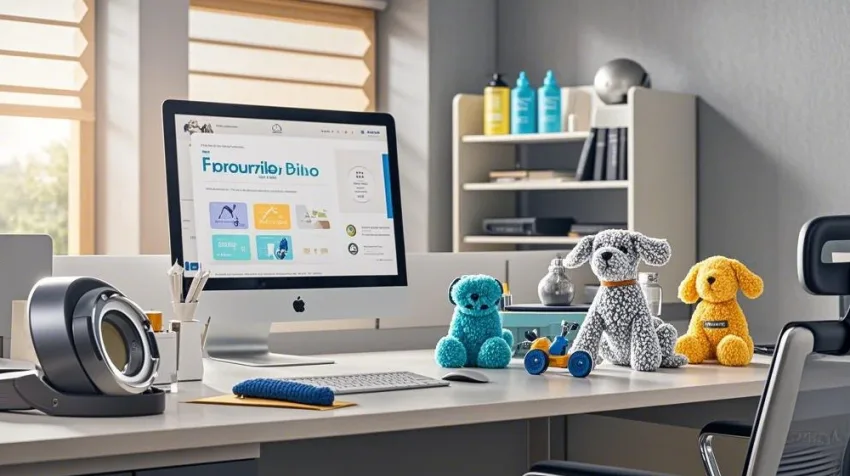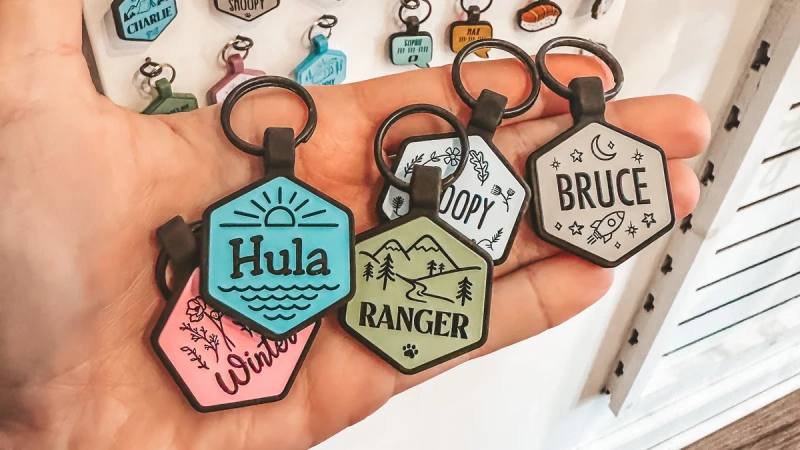
Finding the right wholesale dog clothes supplier feels like searching for the perfect partner for my business dreams.
To choose the best wholesale dog clothes supplier, I begin by pinpointing my specific product needs and quality expectations. I explore potential suppliers via online directories and trade shows, evaluate product quality through sample orders, and assess supplier reliability based on reviews and their communication responsiveness.
While this quick guide offers a starting point, diving into each step’s details can make all the difference in building a robust supply chain. I need to ensure my supplier aligns with my unique business goals and customer needs, which means going beyond the basics to find that perfect match.
Evaluating sample orders ensures product quality.True
Sample orders allow businesses to assess the actual quality of products.
Online directories are unreliable for supplier research.False
Online directories can be a valuable tool for initial supplier research.
How Do You Identify Your Product Needs and Quality Standards?
Ever found yourself wondering exactly what your product needs are and how to set quality standards?
Product needs and quality standards require identifying what your product should deliver and setting benchmarks for consistent quality. This includes choosing materials, ensuring design compliance, and aligning with what consumers expect.

Identifying Product Needs
When I first started out, I remember sitting with a notepad trying to capture the essence of what my products should be. It was like trying to paint a picture without knowing the colors. But then it clicked—understanding the type of products1 I wanted to offer was crucial. Would I go for chic casual wear, sophisticated formal attire, or focus on trendy seasonal items? Knowing my target audience was another piece of the puzzle. Who were these people? What did they truly want?
This clarity not only helped me focus but also made finding the right suppliers a breeze. Suddenly, the world of potential partnerships opened up because I knew exactly what expertise I was seeking.
Establishing Quality Standards
Setting quality standards felt like building a personal creed for my products. It wasn’t just about materials—whether to choose the posh appeal of premium options or stick to budget-friendly ones—but about ensuring everything I created met a higher purpose. Each design had to be on-trend yet functional, a delightful challenge I relished.
Regulatory compliance, like ISO2, was not just about ticking boxes; it was about ensuring my products could hold their own in any market. These standards became my blueprint, guiding me towards excellence.
Evaluating Potential Suppliers
Evaluating suppliers was akin to speed dating—a whirlwind of assessments to find ‘the one.’ Using online directories and attending trade shows allowed me to meet countless potential partners. But reputation mattered most. I found myself diving deep into reviews and references, looking for those golden nuggets of reliability.
Sample Evaluation Table
| Supplier Name | Reputation Score | Sample Quality | Delivery Timeliness |
|---|---|---|---|
| Supplier A | High | Excellent | On Time |
| Supplier B | Medium | Good | Delayed |
Pricing and Terms Considerations
Ah, pricing! The balancing act between affordability and profit is as delicate as it sounds. Competitive pricing became my mantra as I navigated the labyrinth of supplier terms. Comparing structures, understanding minimum order quantities (MOQs), and ensuring my costs aligned with budgets were all part of the daily hustle.
Every interaction taught me something new about logistics and communication, skills that became invaluable as I worked to resolve issues swiftly. For more insights into supplier assessment techniques, don’t miss exploring reliable service metrics3.
Quality standards include regulatory compliance.True
Regulatory compliance is a part of quality standards to meet industry norms.
Low MOQs are irrelevant for small-batch orders.False
Low MOQs are crucial for small-batch orders to avoid overstocking.
How Do I Effectively Research and Evaluate Potential Suppliers?
Ever felt the pressure of finding the perfect supplier? It’s like searching for a needle in a haystack, right? Let me share how I navigated this challenge to find partners who truly understood my business needs.
To research and evaluate potential suppliers, I start by identifying what my business truly needs. Then, I dive into online directories, attend trade shows, and tap into industry networks. Evaluating their reputation, quality, pricing, and reliability ensures they align with my goals.

Identify Your Business Needs
When I first started my business, the sheer number of supplier options was overwhelming. But then I realized the importance of knowing exactly what I needed. For instance, whether I wanted eco-friendly pet accessories4 or chic doggie fashion, being clear on my requirements helped me zero in on the right candidates.
Explore Online Directories and Trade Shows
Imagine you’re in a bustling marketplace. You wouldn’t just pick the first vendor you see, right? The same applies here. Online platforms like Alibaba were my go-to for an initial search, offering a wide range of suppliers. However, nothing beats the personal touch of trade shows. Meeting suppliers face-to-face at these events helped me gauge their offerings firsthand.
Here’s a quick comparison:
| Platform | Pros | Cons |
|---|---|---|
| Alibaba | Wide range of suppliers | Quality may vary |
| Trade Shows | Face-to-face interaction | Limited by location |
Evaluate Supplier Reputation
I learned early on that reputation matters. Checking reviews on sites like Trustpilot and reaching out for references became a routine. Reliable suppliers often had consistent quality and service records. Consider reaching out to other businesses for recommendations5 on reliable suppliers.
Assess Product Quality
The first time I received a sample order was eye-opening. It wasn’t just about seeing the product but also feeling it. Certifications like ISO were key indicators of ethical manufacturing practices.
Compare Pricing and Terms
Price was always a delicate dance. Conduct a thorough comparison of supplier pricing, taking into account shipping costs and discounts for bulk orders to ensure pricing fits your budget without squeezing profit margins too tight.
Examine Reliability and Responsiveness
A supplier’s responsiveness is like a window into their reliability. Quick responses to inquiries and consistent delivery times were essential for me.
Review Shipping and Logistics
Efficient logistics were vital for keeping my inventory levels steady and customers happy. Investigate the shipping options available, including cost and delivery times. For international suppliers, mastering customs clearance was crucial to avoid delays.
By evaluating these factors systematically, I’ve been able to choose suppliers that not only support my business growth but also meet my quality objectives. It’s all about finding partners who resonate with your vision.
Alibaba offers a wide range of suppliers.True
Alibaba hosts numerous suppliers across various industries, making it a vast resource.
Trade shows are not limited by location.False
Trade shows occur in specific locations, limiting access to those areas.
Why Is Product Quality Assessment Crucial?
Imagine receiving a product that doesn’t just meet expectations but exceeds them—it’s the kind of experience that keeps customers coming back.
Product quality assessment is crucial because it ensures products consistently meet or exceed customer expectations and regulatory standards, ultimately reducing defects and boosting brand reputation. This involves systematic evaluations through inspections, testing, and feedback mechanisms.

The Role of Product Quality in Customer Satisfaction
Reflecting on my journey in business, I’ve learned that high-quality products are the foundation of customer trust6. There’s a unique satisfaction in hearing from a customer who was so delighted with their purchase that they told all their friends about it. This is what turns one-time buyers into lifelong fans. When consumers receive products that live up to—or even surpass—their expectations, they’re more inclined to return. It’s this consistency in delivering quality that not only builds a loyal customer base but also amplifies word-of-mouth referrals, something I’ve seen as invaluable.
Impact on Brand Reputation
One of the most daunting yet rewarding aspects of building a brand is maintaining its reputation. A strong brand reputation is intricately linked to reliability and quality. I remember the nervous anticipation before launching a new product line, knowing that rigorous quality control processes were in place. This diligence paid off by preventing product recalls7 and avoiding the pitfalls of negative publicity. It’s all about protecting the brand’s image and earning consumer confidence, one product at a time.
| Benefit | Description |
|---|---|
| Customer Loyalty | High-quality products increase repeat purchases and customer recommendations. |
| Reduced Returns | Quality assurance minimizes defective products, reducing return rates. |
| Market Position | Superior quality differentiates a brand in competitive markets. |
Meeting Regulatory Standards
Navigating the labyrinth of industry regulations can be challenging, yet it’s essential. Product quality assessment ensures compliance with these standards, like ISO or FDA guidelines. Non-compliance can lead to hefty fines or even product bans, something no business can afford. Ensuring our products are legally viable and market-ready8 has always been a priority, not just to avoid penalties but to uphold the integrity of what we offer.
Quality Assessment Methods
Quality isn’t just about the end product—it’s about the process. Here are methods I’ve found vital:
- Inspections: Regular inspections during production help identify defects early, ensuring issues are addressed before they reach customers.
- Testing: Products undergo rigorous tests to check durability and safety, ensuring they can withstand real-world use.
- Customer Feedback: Listening to customer reviews is invaluable. It provides insights into areas for improvement that might not be obvious internally.
Implementing these methods ensures that our products maintain their high quality, minimizing errors that could damage our standing in the marketplace.
Dive deeper into these practices by checking out our detailed guide9 on quality assessment methodologies.
High-quality products increase customer loyalty.True
Quality products lead to repeat purchases and positive referrals.
Ignoring quality assessments can enhance brand reputation.False
Neglecting quality checks risks defects, harming brand image.
How to Compare Supplier Pricing and Terms Effectively?
Ever felt overwhelmed trying to choose the right supplier? I know how crucial it is to get it right!
To effectively compare supplier pricing and terms, start by understanding your specific needs, researching potential suppliers, and assessing their product quality. Use a comparison table to evaluate pricing, minimum order quantities (MOQs), delivery times, and shipping options. Open communication is essential for negotiating better terms.

Identify Your Needs
Before diving into supplier comparisons, I’ve found it essential to clearly outline what my business truly needs. When I was selecting suppliers for dog clothing, I focused on defining whether I needed casual wear, like cozy dog hoodies, or more seasonal items like raincoats. This clarity helped me narrow down suppliers that were in sync with my business vision. Quality standards10 are another vital consideration; whether I’m going for premium materials or targeting budget-conscious buyers shapes my supplier choices.
Research Potential Suppliers
In my journey, platforms like Alibaba have been a goldmine for finding potential suppliers. I also made it a point to visit trade shows whenever possible. These events not only offer a peek into the latest trends but also allow for personal connections that are often invaluable. I learned the hard way that a supplier’s reputation is everything. By meticulously checking reviews and references, I ensure that I’m dealing with someone who can consistently deliver both service and quality.
Table: Research Checklist
| Aspect | Considerations |
|---|---|
| Product Range | Specialized categories |
| Quality Standards | Premium or budget-conscious |
| Supplier Reputation | Online reviews, references |
Evaluate Product Quality
Requesting samples has been my go-to strategy for evaluating product quality. I can’t stress enough how firsthand assessment of the materials and craftsmanship has saved me from potential mishaps. Also, I pay close attention to certifications like ISO or BSCI, which reassure me of ethical and safety compliance through a well-structured sample evaluation process11.
Assess Pricing and Terms
A comparative table has become my best friend when assessing pricing and terms:
Table: Pricing Comparison
| Supplier | Price per Unit | MOQ | Shipping Cost | Bulk Discount |
|---|---|---|---|---|
| A | $10 | 100 | $50 | 5% |
| B | $9 | 200 | $60 | 10% |
I don’t just look at the price; understanding MOQs and bulk discounts is crucial. I ensure that these align with my profit margins so I can sustain my business.
Evaluate Reliability and Responsiveness
Reliability is paramount in my decision-making process. By placing a trial order, I gauge a supplier’s ability to meet delivery deadlines and their overall fulfillment efficiency. Communication is key here—quick and clear responses from suppliers help resolve any issues swiftly, ensuring smooth operations.
Examine Shipping and Logistics
Shipping options can make or break supply chain effectiveness, I’ve discovered. Delving into what each supplier offers in terms of logistics helps maintain inventory levels and meet customer demand. For international partners, managing customs clearance effectively is crucial to avoid delays—trust me, I’ve learned this through experience by exploring various shipping strategies12.
Following these steps has helped me navigate the often complex supplier comparison process with confidence, optimizing procurement strategies to achieve better business outcomes.
Evaluating supplier reputation is crucial for selection.True
Supplier reputation affects product quality and reliability.
Price is the only factor in comparing suppliers effectively.False
Other factors include MOQs, shipping, and reliability.
Why Is Supplier Reliability Crucial for Business Success?
Ever felt the sting of a delayed delivery disrupting your business plans? Reliable suppliers are the unsung heroes behind seamless operations.
Supplier reliability is crucial for business success, ensuring consistent quality, timely deliveries, and fostering customer trust. Dependable suppliers help streamline operations and mitigate risks from supply chain disruptions.

The Impact on Product Quality
Reliable suppliers are pivotal in maintaining the quality standards13 of your products. I remember the first time I received a shipment that didn’t meet my quality expectations. It was a batch of dog collars, and they just didn’t have the durability I promised my customers. That’s when I realized how crucial it is to have reliable suppliers who consistently meet my standards. Especially in a business like mine, offering customized pet products, even the smallest quality slip can lead to significant customer dissatisfaction.
Ensuring Timely Deliveries
Timely delivery is a hallmark of a reliable supplier. Picture this: You’ve promised a boutique pet store they’ll have their special order of harnesses by Friday. But Thursday rolls around, and there’s no sign of them. A reliable supplier wouldn’t let this happen. They stick to schedules, helping me keep my promises and maintain my reputation.
-
Delivery Schedule
Supplier On-Time Rate Average Delay A 95% 2 days B 85% 4 days
After all, late deliveries aren’t just inconvenient—they can unravel the whole supply chain.
Building Customer Trust
Customers are more likely to trust businesses that consistently deliver quality products on time. I’ve learned that customers are more likely to come back when they trust your brand to deliver on its promises. Reliable suppliers play a huge role in this by ensuring that every product I sell meets customer expectations. This consistency turns one-time buyers into loyal fans who rave about your business.
Risk Reduction and Mitigation
A dependable supplier reduces the risk of unexpected supply chain disruptions and acts like an insurance policy against the unexpected. They help me avoid chaos from sudden shortages or price hikes. By carefully choosing my partners, I’ve been able to sidestep financial pitfalls and keep my business running smoothly.
Explore how supplier reliability impacts your overall business strategy14 by considering these factors:
- Communication Efficiency: Reliable suppliers communicate proactively about potential delays or changes.
- Flexibility in Demand Fluctuations: They can adjust to changes in order volume without compromising quality or delivery times.
Strategic Partnerships for Long-Term Success
Forming strategic partnerships with reliable suppliers has been key to my growth strategy and can lead to long-term benefits such as co-development opportunities and preferential pricing. Working closely with my suppliers, we innovate together and push my business to new heights.
Example: The Role of Certifications
In my experience, certifications are more than just a piece of paper—they’re a testament to a supplier’s commitment to quality and reliability. Many businesses look for suppliers with certifications (e.g., ISO) as a mark of reliability and quality assurance. These certifications indicate adherence to international standards in production and management practices.
To explore further about certifications and their importance, consider evaluating suppliers with relevant industry standards15 that align with your business goals.
Reliable suppliers ensure consistent product quality.True
Reliable suppliers consistently meet quality standards, crucial for customer satisfaction.
Late deliveries do not affect business credibility.False
Late deliveries disrupt supply chains and harm business credibility.
Conclusion
Choosing the best wholesale dog clothes supplier involves identifying product needs, evaluating quality through samples, assessing reliability and pricing, and ensuring alignment with business goals for successful partnerships.
-
Explore various categories within pet clothing to identify niche markets that match your business goals. ↩
-
Understand the significance of these certifications in ensuring quality and ethical manufacturing practices. ↩
-
Learn about metrics and methods to assess the reliability of suppliers for consistent service. ↩
-
Explore suppliers specializing in eco-friendly pet products to align with sustainable business practices. ↩
-
Find trusted supplier recommendations from other businesses in the pet industry. ↩
-
Learn why customer trust is fundamental for business growth and how it impacts sales. ↩
-
Understand the severe impacts of product recalls on a company’s brand reputation. ↩
-
Discover the essential industry regulations required for launching market-ready products. ↩
-
Explore various methodologies that ensure thorough product quality assessment. ↩
-
Understand what quality standards to expect from potential suppliers for better product assurance. ↩
-
Learn effective methods for assessing product samples from suppliers to ensure quality. ↩
-
Discover efficient shipping strategies that suppliers can offer to optimize logistics. ↩
-
Learn how reliable suppliers ensure consistent product quality by meeting specifications, reducing defects, and maintaining standards essential for customer satisfaction. ↩
-
Discover how integrating reliable suppliers into your business strategy can enhance efficiency, reduce risks, and support long-term growth goals. ↩
-
Explore why supplier certifications such as ISO are critical indicators of reliability and adherence to international quality standards. ↩



